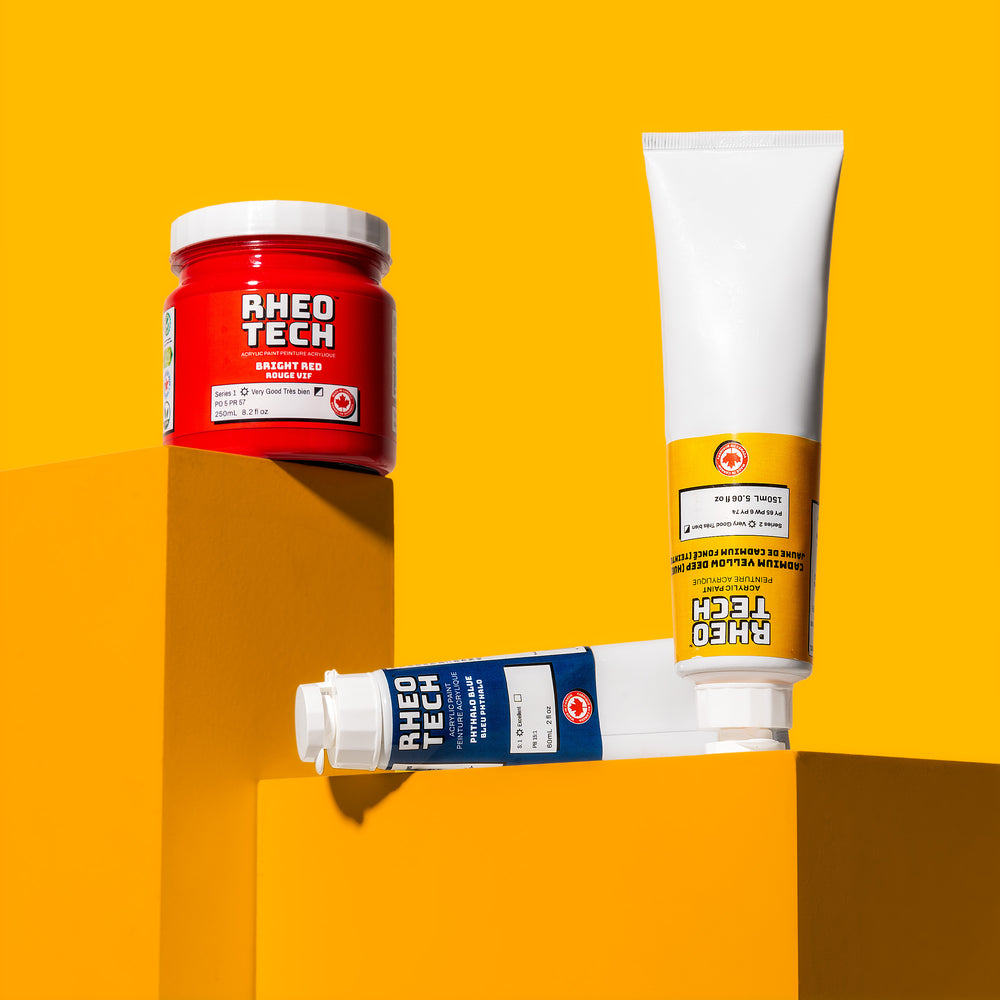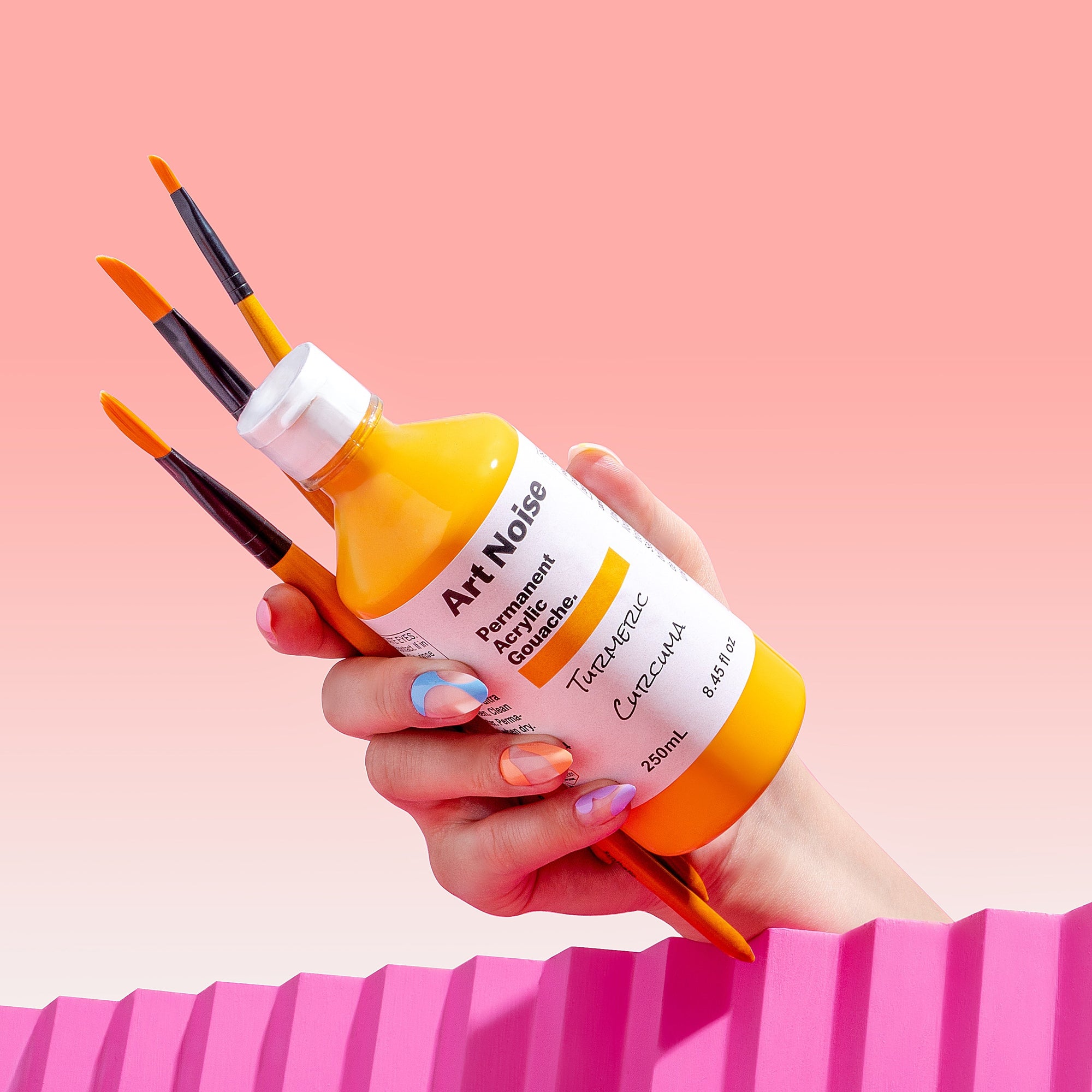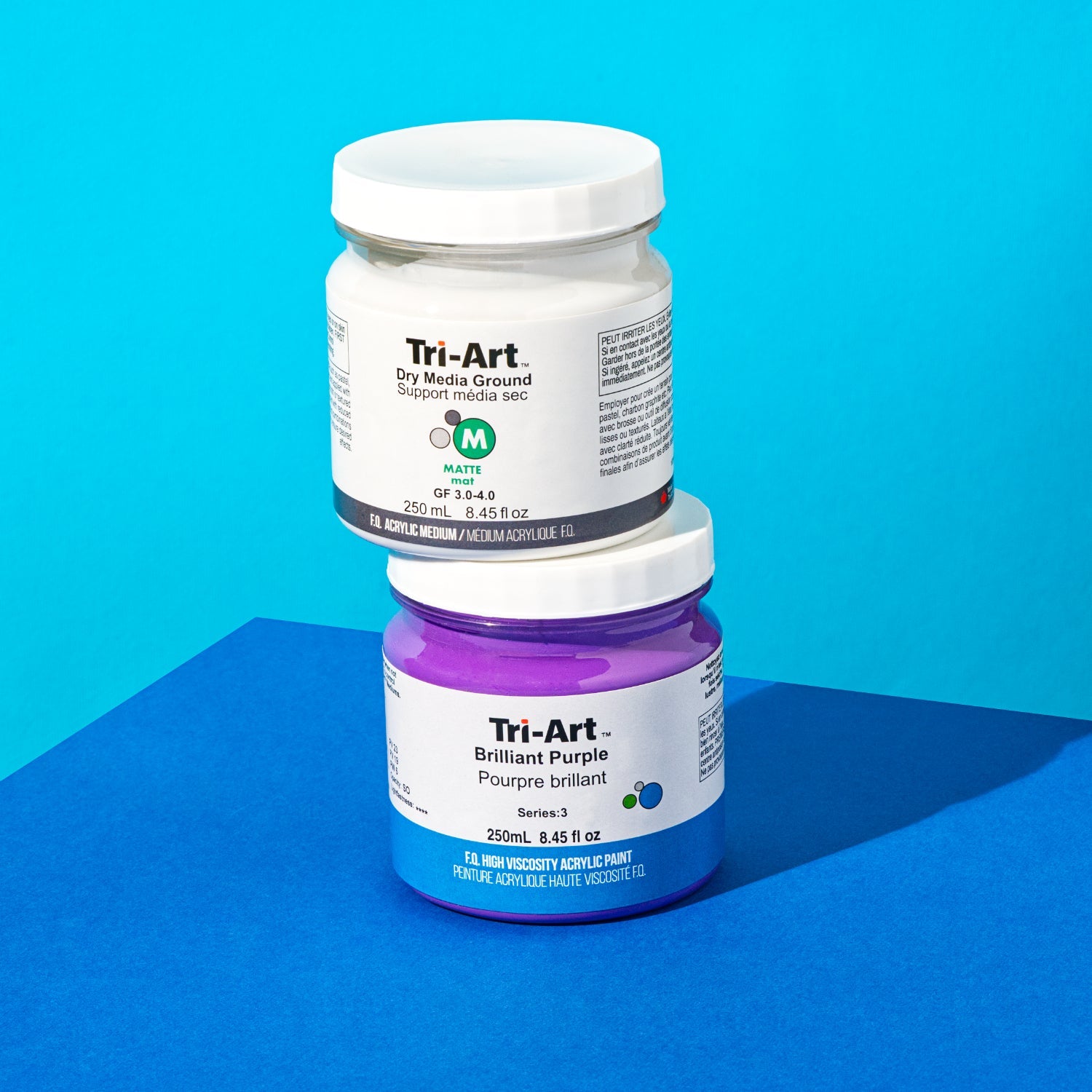Acrylic paint is a relatively new type of paint, and has become a popular option for artists at any stage. Acrylic is a water-based paint made from 100% acrylic polymer emulsion. Read more about how acrylic paint is made and its properties in What is Acrylic Paint?
While it is also suitable for professional applications, acrylic paint’s versatility and ease-of-use makes it a great starting point for beginners. Acrylic dries relatively quickly, especially in comparison to oil paint, and is permanent and water-fast when dry. Unlike oil, acrylic also doesn’t require the use of harsh solvents (though it should still be used in a well-ventilated area).
Acrylic requires few materials to get started, although they each have an important part to play in the process. In this series, we provide an overview of the supplies that you’ll need to get started with acrylic paint.
To get started with acrylic painting, one of the first considerations is the type of paint you’ll be using. There are many different colours and types of paint to choose from, and it can be overwhelming - here is a brief overview of what to look for.
Acrylic Paint Grades
There are two main grades of paint available: artist- or professional-grade, and student- or developing-artist grade. Below is a brief overview, but you can learn more in our article, Types of Acrylic Paint.
The quality of the pigment grind is the same across all paint grades at Tri-Art, including our children’s paint lines. While made with the same pigments, professional acrylics have the most pigment, with developing artist acrylics using less pigment. Each of these grades have different paint lines with different textures, consistencies, and applications to suit your needs.
Our professional artist acrylic paint lines, from thickest to thinnest, include our High Viscosity, Liquid Acrylics, and Low Viscosity, and are suitable for professionals and artists at any stage.
Thicker options, like High Viscosity, offer a buttery consistency for impasto and knife-painting techniques. Liquids have a lotion-like consistency that offers smooth coverage and can be thickened or thinned for different applications. Our Low Viscosity paint is water-like and free flowing for fine-detailed brush work, large washes, glazing, multimedia, and airbrush applications.
Our developing artist lines include budget-friendly options such as Rheotech and Art Noise that are great choices for beginners as well as for more experienced artists.
Rheotech offers a creamy, workable consistency for all-purpose applications, great for the serious art student as well as production artists. Art Noise is our permanent acrylic gouache, offering the benefits of gouache in a liquid acrylic format.
Acrylic Paint Colours
Colour is another factor to consider when choosing your paint. You may be drawn to certain colours or have specific shades in mind for a certain piece, but if you’re not sure where to start, it’s easy to begin with a limited colour palette. Once you get to know the colours you can easily add or remove them based on your preferences, techniques, and personal style.
Different colour palettes can be suited to different applications or purposes.
For all purpose applications, a solid starter palette might look like: Naphthol Red Medium, Phthalo Blue, Azo Yellow Medium, Phthalo Green, Burnt Umber, Titanium White, Payne’s Grey
For glazing applications, a transparent palette is a great option, and could include: Quinacridone Magenta, Phthalo Blue Green Shade, Indian Yellow, Green Gold, Transparent Pyrrole Red Medium, Transparent Permanent Orange
It can also be useful to begin with a ready-made set of colours that will give you something to get started with if you’re new to acrylic painting (or looking for a fresh palette). We offer several options for paint sets, in both our professional High Viscosity and Liquids lines, and our developing artists ranges in Rheotech and Art Noise. Sets like these can be great starting points to explore which shades you prefer to work with.
Starting off with just a few colours can be helpful to learn different techniques as well as how to mix a variety of new shades, so that you can find out what your preferences are and then build up your materials as needed.
Different types of paint are better suited to different purposes, although they can be adjusted with mediums as well. When choosing your paint, you might consider the paint grade, the colour(s) you’d like to work with, and the type of effects you’re looking to create. It is also possible to use various types of acrylic paint in the same project, so you aren’t limited to one paint line. For example, you could use a thin wash of Liquids to create a colourful base background, then go in with High Viscosity to add thick texture to help certain areas stand out. Try out what interests you!
Explore our range of acrylic paints and mediums through our website, or at Art Noise online or in-person in Kingston. If you use our acrylic paints or mediums, make sure to tag us on social media posts - we would love to see your work!
For more information, check out our other blog posts on acrylic paint, our FAQ page, or contact us.





